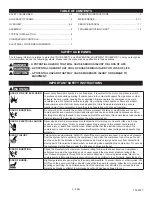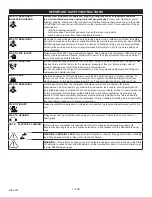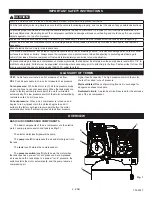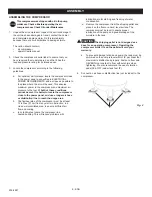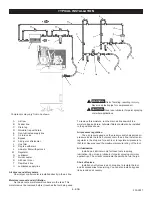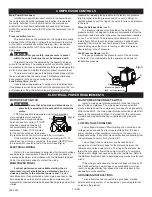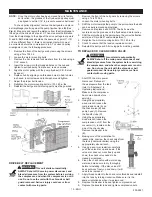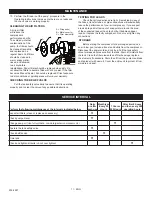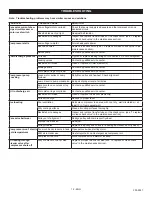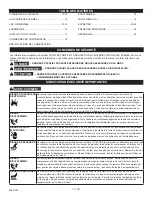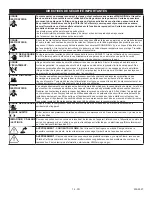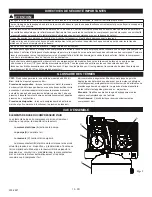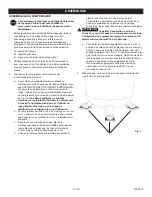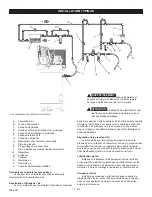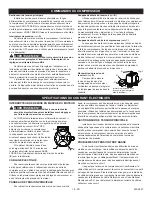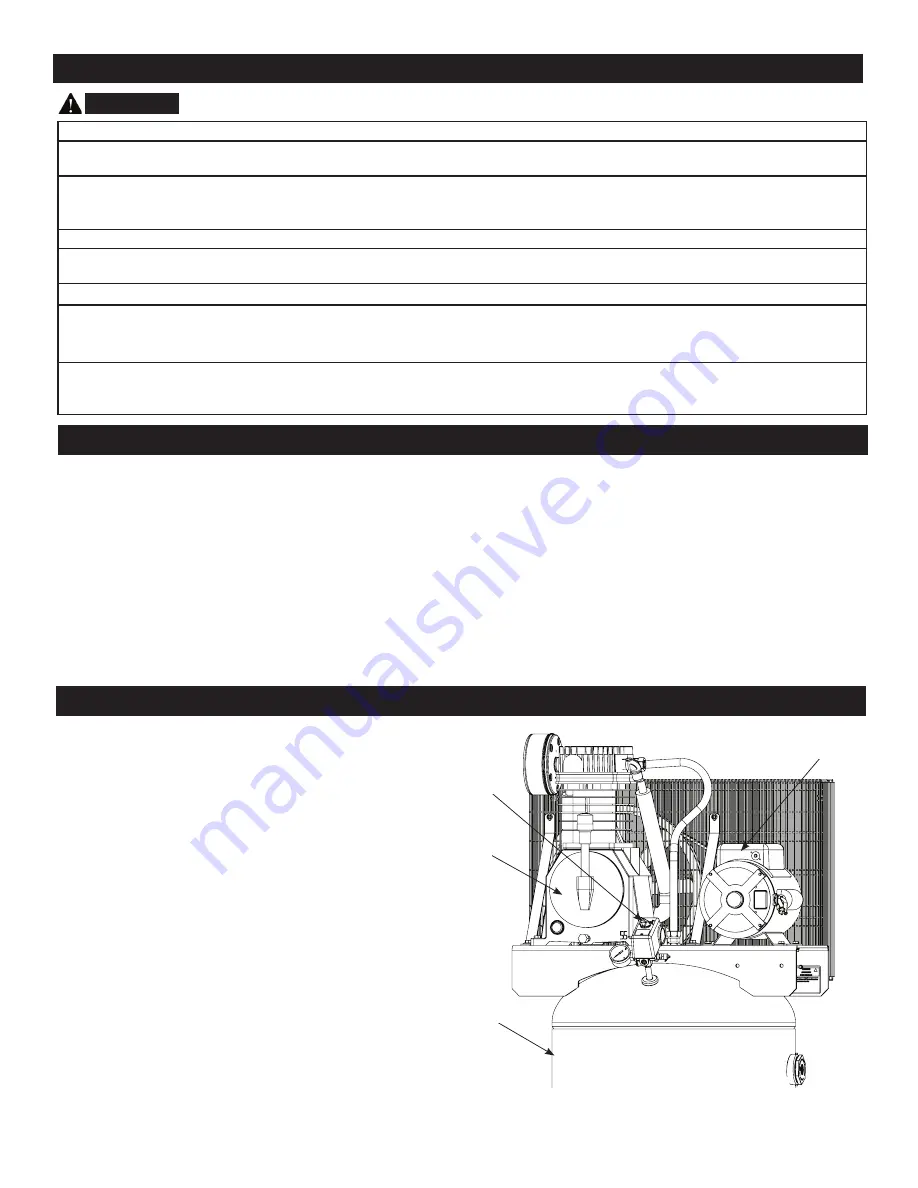
4 - ENG
200-2927
The basic components of the air compressor are the electric
motor, pump, pressure switch and tank (see
Fig. 1
).
The electric motor (see
A
) powers the pump.
The
pump
(see
B
) compresses the air and discharges it into
the tank.
The
tank
(see
C
) stores the compressed air.
The
pressure switch
(see
D
) shuts down the motor when
the tank reaches a pre-set “cut-out” pressure. As compressed
air is used and the tank drops to a pre-set “cut-in” pressure, the
switch restarts the motor automatically, and the pump resumes
compressing air.
OVERVIEW
BASIC AIR COMPRESSOR COMPONENTS
IMPORTANT SAFETY INSTRUCTIONS
CAUTION:
Drain the moisture from the tank on a daily basis. A clean, dry tank will help prevent corrosion.
Pull the tank safety valve ring daily to ensure that the valve is functioning properly, and to clear the valve of any possible obstructions.
To provide proper ventilation for cooling, the compressor must be kept a minimum of 12 inches (31 cm) from the nearest wall, in a
well–ventilated area. Restricting any of the compressor ventilation openings will cause overheating and could cause fire, never place
objects against or on top of compressor.
Fasten the compressor down securely if transporting is necessary. Pressure must be released from the tank before transporting.
Protect the air hose and interconnect cord from damage and puncture. Inspect them weekly for weak or worn spots, and replace if
necessary.
Risk of electric shock or injury - Use indoors only.
On oil-lubed compressors, oil can leak or spill and could result in fire or breathing hazard. Oil leaks will damage paint, carpet or other
surfaces in vehicles or trailers. Always place the compressor on a protective mat when transporting to protect against damage to
vehicle from leaks. Remove compressor from vehicle immediately upon arrival at your destination.
To prevent damage to tank and compressor on stationary models, the tank must be shimmed so the pump base is level within 1/8” to
distribute oil properly. All feet must be supported, shimming where necessary, prior to attaching to the floor. Fasten all feet to floor. We
also recommend the use of vibration pads (094-0137) under tank feet.
CFM:
Cubic feet per minute; a unit of measure of air flow.
PSI:
Pounds per square inch; a unit of measure of air pressure.
Cut-in pressure:
While the motor is off, air tank pressure drops
as you continue to use your accessory. When the tank pressure
drops to factory set low pressure point, the motor will restart
automatically. The low pressure at which the motor automatically
restarts is called “cut-in” pressure.
Cut-out pressure:
When an air compressor is turned on and
begins to run, air pressure in the air tank begins to build. It
builds to the factory set high pressure point before the motor
automatically shuts off, protecting your air tank from pressure
higher than its capacity. The high pressure at which the motor
shuts off is called “cut-out” pressure.
Well-ventilated:
Means of providing fresh air in exchange for
dangerous exhaust or vapors.
Dedicated circuit:
An electrical circuit reserved for the exclusive
use of the air compressor.
GLOSSARY OF TERMS
Fig. 1
B
D
C
A
Summary of Contents for IV5076055
Page 35: ...200 2927 35 200 2927 NOTES...


